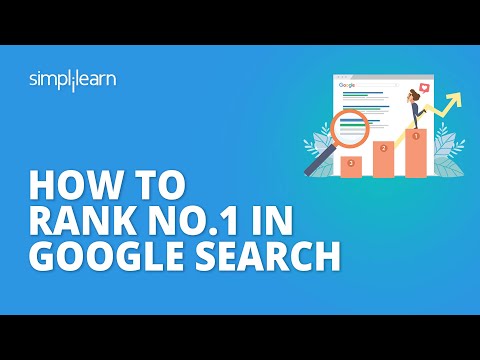
Fast SEO Growth: Tips for Rapid Search Engine Ranking Improvement
Search Engine Optimization (SEO) is a critical component of digital marketing. If you’re looking to improve your website’s search engine rankings quickly, you need to focus on strategies that deliver fast results. In this article, we’ll explore actionable tips to accelerate your SEO growth and dominate search engine results pages (SERPs).
1. Optimize Your Website for Mobile
With the majority of internet users accessing websites via mobile devices, having a mobile-friendly website is no longer optional. Google prioritizes mobile-first indexing, meaning your site’s mobile version is the benchmark for how rankings are determined. Ensure your website is responsive, loads quickly, and provides an excellent user experience on all devices.
To achieve this, use tools like Google’s Mobile-Friendly Test to identify issues. Optimize images, use CSS media queries, and minimize JavaScript to improve loading times. A fast, mobile-optimized site not only ranks better but also reduces bounce rates and increases user engagement.
2. Leverage High-Quality Backlinks
Backlinks remain one of the most influential ranking factors in SEO. Acquiring high-quality backlinks from authoritative websites signals to search engines that your content is valuable and trustworthy. Focus on building relationships with industry influencers, guest posting on reputable blogs, and creating shareable content that naturally attracts links.
Avoid black-hat SEO tactics like buying links or participating in link schemes, as these can lead to penalties. Instead, invest in creating link-worthy content such as in-depth guides, case studies, and original research. Tools like Ahrefs and SEMrush can help you track your backlink profile and identify opportunities for improvement.
3. Focus on Content Quality and Relevance
Content is king in SEO, but not just any content—high-quality, relevant, and engaging content. Search engines prioritize content that provides value to users, so focus on creating comprehensive articles that answer user queries thoroughly. Use tools like AnswerThePublic to identify common questions in your niche and address them in your content.
Incorporate primary and secondary keywords naturally, and avoid keyword stuffing. Use headings, bullet points, and images to break up text and improve readability. Additionally, update your content regularly to keep it fresh and relevant. High-quality content not only ranks better but also encourages social shares and backlinks.
4. Improve Page Speed
Page speed is a critical ranking factor, especially for mobile users. Slow-loading websites frustrate users and increase bounce rates, negatively impacting your SEO. Use tools like Google PageSpeed Insights to identify performance bottlenecks and implement fixes such as optimizing images, enabling browser caching, and minimizing CSS and JavaScript files.
Consider using a Content Delivery Network (CDN) to distribute your content across multiple servers globally, reducing load times for users in different regions. Faster websites not only rank higher but also provide a better user experience, leading to higher conversions and engagement.
5. Optimize for User Intent
Understanding user intent is crucial for creating content that ranks well. Search engines aim to deliver results that match what users are looking for, so your content must align with their intent. There are three main types of user intent: informational, navigational, and transactional.
For example, if a user searches for “how to bake a cake,” they are likely looking for informational content. Create detailed guides, tutorials, or videos to satisfy this intent. If the intent is transactional, such as “buy running shoes online,” optimize product pages with clear calls-to-action and easy navigation. Aligning your content with user intent improves relevance and boosts rankings.
6. Use Structured Data Markup
Structured data markup, also known as schema markup, helps search engines understand the content of your website better. By adding schema markup to your pages, you can enhance your search listings with rich snippets, such as star ratings, FAQs, and breadcrumbs. These elements make your listings more attractive and increase click-through rates.
Use tools like Google’s Structured Data Markup Helper to generate schema code for your website. Common types of schema include Article, Product, and Local Business markup. Implementing structured data can give you a competitive edge in SERPs and improve visibility.
7. Monitor and Analyze Performance
SEO is an ongoing process that requires constant monitoring and analysis. Use tools like Google Analytics and Google Search Console to track your website’s performance, identify trends, and uncover areas for improvement. Monitor key metrics such as organic traffic, bounce rates, and keyword rankings.
Regularly audit your website for technical issues, such as broken links, duplicate content, and crawl errors. Address these issues promptly to maintain a healthy website. By staying proactive and data-driven, you can continuously optimize your SEO strategy for better results.
In conclusion, achieving fast SEO growth requires a combination of technical optimization, high-quality content, and strategic link-building. By implementing these tips, you can improve your search engine rankings quickly and drive more organic traffic to your website. Remember, SEO is a long-term investment, so stay consistent and adapt to algorithm changes to maintain your competitive edge.




![Roblox Digital Gift Card - 2,500 Robux [Includes Exclusive Virtual Item] [Digital Code]](https://nbanner.link/img/B07RX6FBFR.jpg)